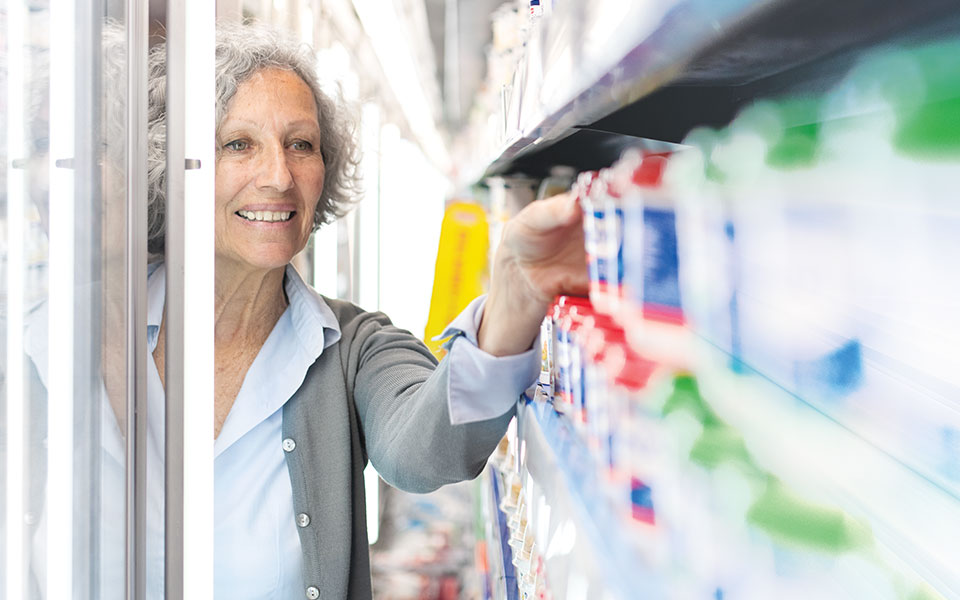*On June 1, 2023 Emerson’s Climate Technologies business became a new standalone company – Copeland. Though our name has changed, we are building on more than a century of HVACR innovation and industry leadership, and Copeland continues to offer the same products, industry stewardship, and learning opportunities you’ve grown to trust. Information found on this webpage posted before June 1, 2023 may contain our old name or branding, but you can be at ease knowing it was created with the knowledge and expertise of Copeland.
Secondary Systems
Figure 6 shows a simple secondary system. The high-stage system cools the liquid R744 in the secondary circuit. The R744 is pumped around the load. It is volatile, so unlike a conventional secondary fluid such as glycol it does not remain as a liquid. Instead it partially evaporates, providing a significantly greater cooling capacity. This reduces the pump power required and the temperature difference needed at the heat exchanger.

The high-stage system is a simple chiller-type system, typically running on an HFC, HC or Ammonia refrigerant.
In the next article of this series we’ll review the advantages and disadvantages of booster, cascade, and secondary systems. We’ll also review some case studies to determine how to select the correct system for our application.

Electrical component considerations for A2L system safety
Electrical component considerations for A2L system safety As a new refrigerant category in the...

A2L refrigerant regulation updates: what you need to know today
Preparing for the approval and safe use of A2Ls in commercial refrigeration applications The move...

Address Efficiency Mandates with Compression Technologies
Strategies for complying with DOE and ENERGY STAR® in self-contained and remote condensing units...
